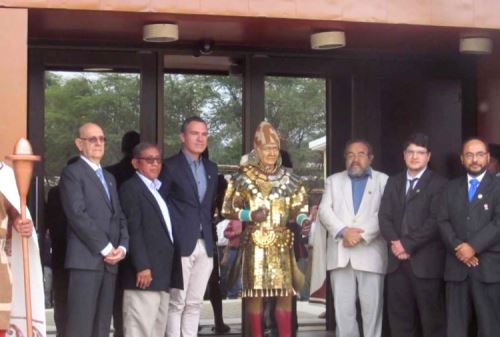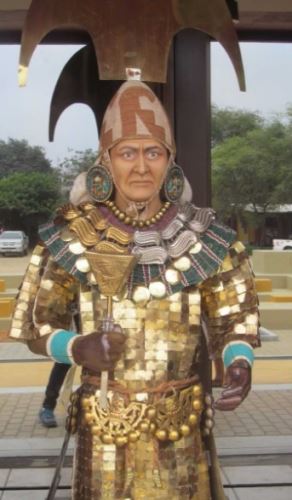Peru celebrated the 30th anniversary of the discovery of pre-Inca leader Lord of Sipan presenting a bust of the ruler during a ceremony at Huaca Rajada-Sipan Museum in northern Lambayeque region.
The Andean country thus materialized Lord of Sipan's
3D face, recreated by Brazilian expert Cicero Moraes in cooperation with Lima-based Inca Garcilaso de la Vega University.
"We —archaeologists and the State— are no longer late. No longer are we outstripped by looters and huaqueros [tomb raiders] and, for the first time, we discovered a world-class find […]," the government official said.
"Peru must acknowledge itself and project itself to the world through culture. The discovery of the
Lord of Sipan and his meaning are pivotal to develop this view," he added.
In this sense, the Culture portfolio head noted the reconstruction work gives a face not only to the warrior priest, but to a historic figure and everything that comes with its finding.

The discoverer
On the other hand, Lord of Sipan discoverer Walter Alva addressed the implications of his feat on today’s Peru.
"Lambayeque is established as a tourist destination, and Peruvian archaeology has changed as a result of this finding that marked a major milestone," the archaeologist underlined.

"We just
welcomed Egypt's most important archaeologist, Zahi Hawass, who has left a wonderful message by recognizing our work," Alva recalled.
"And, as an Egyptian, he compared the finding of Sipan to that of Tutankhamun, which I think is a way of lifting up the name of Peru."
Lastly, the explorer referred to archeologists' role in raising awareness, fostering identity and giving the population back its self-esteem.
"Now all Lambayequeans are proud to be the descendants of this millennia-old, creative race that shaped one of the most important cultures in the world," he concluded.
(END) SDC/LZD/DHT/MVB